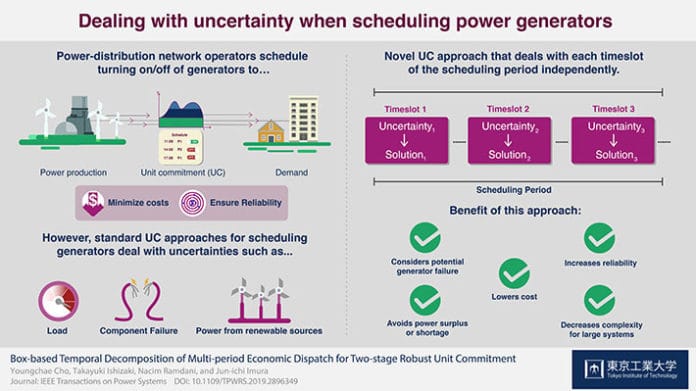It is very common for us to consider the electricity delivered to our home for granted. However, many things are happening behind the scenes to make electrical power available to everyone when demanded. For example, most machinery and generators have start-up and start-down times and related costs.
Multiple generators are available at any given point, and it is not easy to turn them on or off quickly. So, network operators mostly scheduled these turn-on and turn-off operations in advance as per the predicted load demand to reduce the cost. These schedules are made based on mathematical models and strategies that deal with the tradeoff that involves minimizing the costs and saving energy on the one hand and ensuring reliability on the other.
One such family of mathematical optimization problems is “unit commitment (UC),” which has been used to determine the required on or off status of generators in power systems. We know all these problems and schedules are resolved in advance. This indicates that the board has to deal with unpredictability in multiple numbers, like load, generator availability and failures, and renewable energy input.
Existing methods come up with several disadvantages. Some of them consider the scheduled period and require considering the dynamics of the generators and uncertain variables, but this uncertainty is usually not properly addressed, and overly conservative schedules are obtained. The other methods cannot deal with energy storage systems necessary for renewable energy technology.
Considering these problems, a team of researchers from Tokyo Tech, led by Professor Jun-ichi Imura, developed a novel UC method with an interesting twist to overcome the above-mentioned issues.
“The proposed method has advantages over previous UC methods in several ways and explicitly addresses their main issues,” explains Imura. Instead of taking the scheduled period and dealing with system dynamics, their approach divides the period into timeslots to be dealt with (optimized for) individually in “real-time”.
For doing this, the upper and lower limits for each timeslot are given to the uncertain values. The interplay and constraints are considered to find a possible solution. In addition to this, the method can be adjusted to consider potential generator outages.
The team also gave a demonstration of how the proposed method works. Then they also compared its results with those of the existing methods. And it was found that their method was more reliable than the existing one. Also, there was no problem of power surplus or power shortage. “The proposed method represents a practical framework for non-anticipative and robust UC,” concludes Mr. Cho, the paper’s lead author who explains the team’s efforts.
To further improve the results, the researchers will continue working on various aspects of their proposed method, like finding other ways to calculate the limits for the uncertain variables for each timeslot. Developing and implementing such efficient strategies in power distribution networks ensures that everyone can get cheap and reliable electricity for all electric and electronic devices that we love and rely on.
The paper is published in IEEE Transactions on Power Systems.
